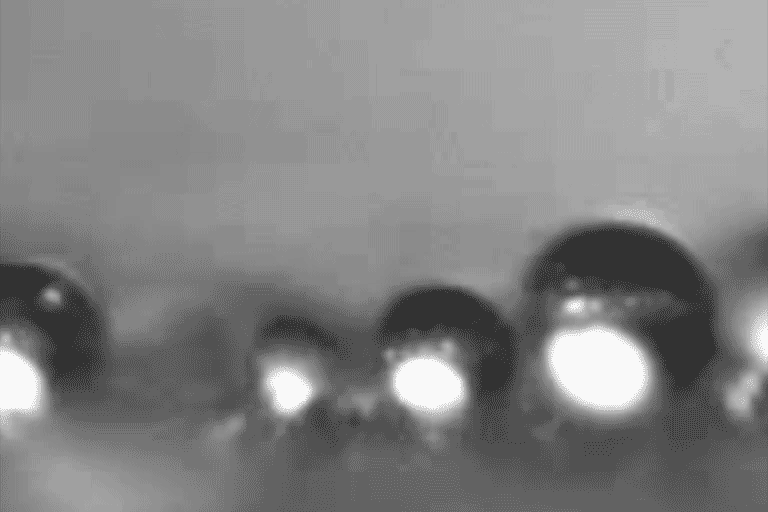Scientists have developed a novel new water droplet system that could help keep our electronics cool and running at top speeds. Even better, it organically targets hot areas.
Inspired by the super-hydrophobic wings of cicada insects, which naturally repel water, the tiny water cooling technique has the potential to be smarter and more versatile than the systems we have in our electronics today.
Computer chips don't like getting hot – which is why your laptop has fans – and the team from Duke University says its miniature vapour chambers can improve the performance of everything from smartphones to electric cars.
"A better cooling system will enable faster computers, longer-lasting electronics and more powerful electric vehicles," says one of the researchers, Chuan-Hua Chen.
That's because when electronics aren't properly cooled, they slow down, become less reliable and crash more often.
 Credit: Duke University
Credit: Duke University
The new system takes advantage of the way water droplets naturally produce a small amount of energy when they merge, as the surface area of the drop is reduced, and less energy is required to flatten them out.
If the underlying material is enough of a water repellent, that released energy causes the drops to literally jump off the surface. It's an important self-cleaning method for the cicada.
With this technology, a sponge-like substance containing moisture is placed under the electronics. The moisture vaporises near any hostpots and is forced onto a hydrophobic surface below the sponge.
There the water condenses, and passive cooling structures built into the material carry the heat away from the moisture. As the water builds, droplets merge, and the hydrophobic coating causes it to jump back up to the sponge, where it's trapped again and the process repeats.
One advantage of the new cooling technique is that it works in any direction, because it doesn't rely on gravity. It also has a built-in vertical heat escape mechanism, whereas many current cooling systems dissipate heat across a single plane.
"As an analogy, to avoid flooding, it is useful to spread the rain over a large area," explains Chen. "But if the ground is soaked, the water has no vertical pathway to escape, and flooding is inevitable."
The researchers admit work still needs to be done to get this into a form that can be used in today's electronics – in particular with finding suitable materials for long-term use – but they've shown the concept is solid.
"It has taken us a few years to work the system to a point where it's at least comparable to a copper heat spreader, the most popular cooling solution," adds Chen. "But now, for the first time, I see a pathway to beating the industry standards."
The research has been published in Applied Physics Letters.
Check out the effect in action in the video below:

